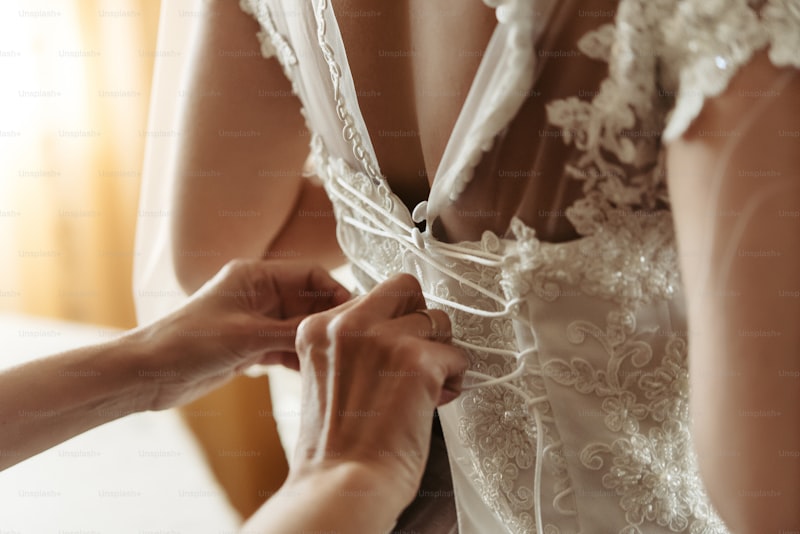Dress Fit: What Every Bride Should Know
When it comes to planning a wedding, the importance of a bride’s dress fit cannot be overstated. Finding the perfect dress that flatters your body shape and complements your style is crucial. In this comprehensive guide, we will explore everything a bride should know about dress fit, from understanding body types to tailoring options, ensuring that every bride looks and feels her best on her special day.
The Importance of Dress Fit
Dress fit is vital for several reasons. Not only does it enhance a bride's natural beauty, but it also affects her confidence level on the big day. A well-fitted dress allows for comfort, enabling the bride to move freely, dance, and enjoy her celebration without any wardrobe malfunctions.
Understanding Body Types
Before embarking on the journey of finding a wedding dress, it’s essential to understand different body types. Every bride is unique, and knowing your body type can help you select a silhouette that accentuates your best features. Here are some common body types:
| Body Type | Description | Recommended Styles |
| Apple | Broader shoulders, fuller bust, and narrower hips. | A-line, empire waist, and V-neck dresses that elongate the body. |
| Pear | Narrow shoulders, defined waist, and wider hips. | Fit-and-flare, A-line, and dresses with embellishments on top. |
| Hourglass | Balanced shoulders and hips with a defined waist. | Mermaid, fitted styles, and dresses that emphasize the waist. |
| Rectangle | Similar measurements for bust, waist, and hips without a defined waist. | Drop waist, empire waist, and styles that create curves. |
| Inverted Triangle | Broader shoulders and bust with narrower hips. | A-line, flared skirts, and off-the-shoulder styles that balance the silhouette. |
Choosing the Right Dress Silhouette
After identifying your body type, the next step is to choose the right dress silhouette. Here are some popular options:
- A-Line: Flattering for most body types, it narrows at the waist and flows out to the hem.
- Mermaid: Fitted through the body and flares out at the knees, enhancing curves.
- Ball Gown: A traditional favorite, it features a fitted bodice and a voluminous skirt.
- Sheath: A sleek and simple silhouette that flows with the body, ideal for tall brides.
Getting the Right Measurements
To achieve the perfect dress fit, accurate measurements are essential. Here are key measurements to take:
- Bust: Measure around the fullest part of your bust, keeping the tape snug but not tight.
- Waist: Measure around the smallest part of your waist, usually just above the belly button.
- Hips: Measure around the widest part of your hips.
- Height: Always measure your height barefoot and ensure to note down your heel height as well.
Consider visiting a professional tailor or bridal shop to obtain precise measurements, especially when planning to order a custom gown.
Factors Affecting Dress Fit
Several factors will affect how well a dress fits, including:
- Fabric: Some fabrics may drape differently than others; understand how each fabric reacts when worn.
- Style Details: Be mindful of necklines, sleeve styles, and embellishments as these can enhance or disrupt the fit.
- Tailoring: Most dresses require some level of tailoring, so it's important to account for possible alterations during your budget planning.
Common Issues with Dress Fit
Even with careful selection, issues can arise with dress fit. Here are some common problems and solutions:
- Too Tight: If the dress feels restrictive, consider larger sizes or seeking professional alterations.
- Too Loose: A skilled tailor can adjust the bodice or waistband for a secure fit.
- Length Problems: Ensure the dress is the right length for your height, and make adjustments if necessary.
- Unflattering Areas: Identify areas you wish to conceal and discuss them with your tailor for possible enhancements.
Bridesmaid Dress Fit Considerations
While the bride is the center of attention, bridesmaid dress fit is equally important for the overall aesthetic of the wedding. Here are some tips:
- Consider uniformity to create a cohesive look while allowing for some individuality among bridesmaids.
- Encourage bridesmaids to choose styles that complement their body types for a confident appearance.
- Plan fittings well in advance, similar to the bride's gown, to make necessary adjustments.

Final Thoughts on Dress Fit
Dress fit is a crucial component of a bride’s wedding day experience. By understanding your body type and selecting the right silhouette, you can ensure that your chosen dress enhances your natural beauty. Remember to rely on accurate measurements and professional tailoring to achieve the perfect fit, allowing you to confidently walk down the aisle. Don't forget to consider the fit of your bridesmaids’ dresses as well, as their comfort and style contribute to the day’s overall atmosphere.
In summary, the journey to finding your ideal wedding dress may seem daunting, but with thorough research and thoughtful planning, it can also be one of the most enjoyable aspects of wedding preparation. Always communicate openly with your tailor, and keep in mind that alterations are a standard part of the process. By prioritizing dress fit, you’ll not only look stunning but also feel incredible as you celebrate your special day.